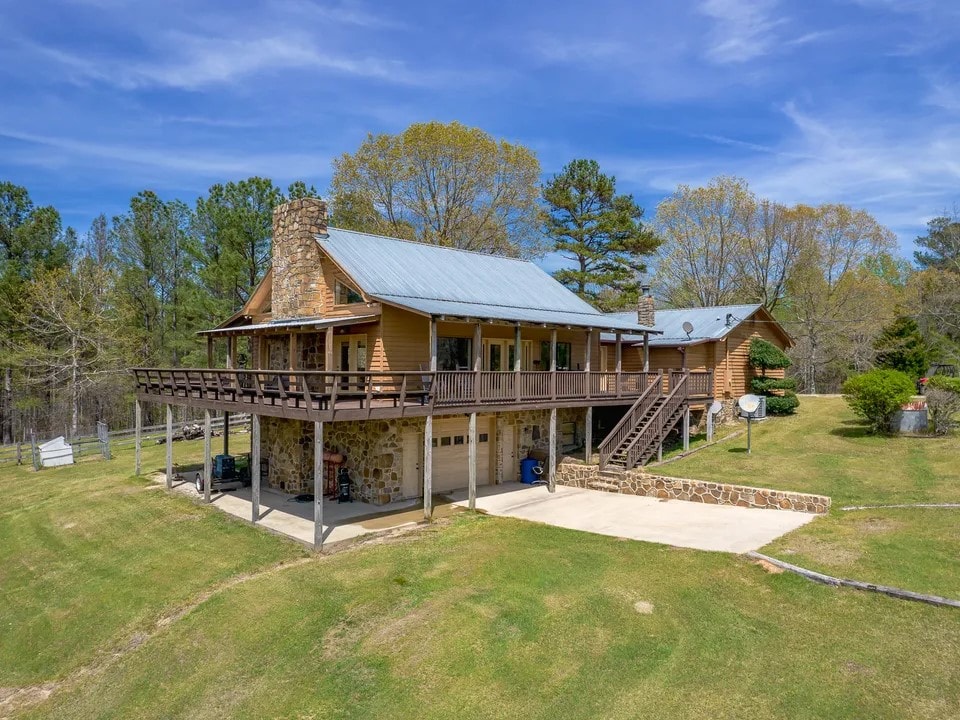Looking to Buy Land and Build a House?
So, you’re thinking about buying land and building your dream house. That’s a fantastic idea! Owning a built-from-scratch home means you get to design every detail to suit your lifestyle and taste. This flexibility allows you to create a space that’s truly yours, tailored to your needs and preferences. You can choose the layout, materials, and finishes that reflect your personality and functional requirements.
In this guide, we’ll walk you through the process, helping you understand how to buy land and build a house. From selecting the perfect location to designing your dream home, we’ve got you covered.
Choosing the Perfect Location
1. Proximity to Daily Needs
When selecting the perfect location for your future home, consider how close the land is to your daily needs. Being near your workplace, good schools, and amenities, like grocery stores and parks, can significantly enhance your quality of life. This proximity can save you time, reduce stress, and even lower your transportation costs.
2. Type of Area
Decide on the type of area you prefer. Urban land, usually closer to city centers, provides easy access to a variety of services and entertainment options but often comes with a higher price tag. Suburban areas offer a balance of space and accessibility, giving you more room while still being close to urban conveniences. Rural land offers the most space and privacy, perfect for those who enjoy tranquility and nature, but it might be farther from amenities and require more travel.
3. Accessibility and Convenience
Accessibility is another key factor. Consider how easy it is to reach your plot of land. Good road access is essential for both the construction process and your daily commutes. Also, think about the availability of essential services like water, electricity, and the internet.
Mossy Oak Properties is here to help you find the perfect land for your dream home. We offer a wide range of land for sale, from urban plots to expansive rural properties. Our experienced real estate agents can guide you through the entire process, ensuring you find the right piece of land that fits your needs and budget.
Setting Your Budget
1. Estimating Costs
Setting a realistic budget is crucial when buying land and building a house. You need to prepare for different expenses, including the purchase of the land, building materials, labor, permits, and other fees. The price of land varies widely depending on location, size, and type. Urban plots are generally more expensive than suburban or rural ones. For example, a plot in a bustling city like New York could cost significantly more than a similar-sized plot in rural Montana.
Additionally, construction costs will include materials, labor, and design fees. High-quality materials and skilled labor can add to your expenses, but they ensure a better build. Don’t forget the permits required for building, which can add up. These might include building permits, electrical permits, and plumbing permits, each with its own cost.
2. Hidden Costs
There are also hidden costs to consider. Land surveys, inspections, and utility connections can significantly impact your budget. A land survey, which can cost several hundred dollars, is necessary to determine property boundaries and any potential issues with the plot. Inspections, often required to ensure the land is suitable for building, might reveal hidden problems that need fixing. Connecting utilities like water, electricity, and sewage can be costly, especially in remote areas. For instance, installing a septic tank might be necessary if your plot is far from municipal sewage lines, and this can add a substantial amount to your budget.
3. Planning for Unexpected Expenses
It’s wise to set aside a portion of your budget for unexpected expenses. Issues can arise during construction, such as unforeseen problems with the land or delays due to weather. Having a financial cushion can help you manage these surprises without derailing your project. For instance, discovering poor soil conditions might require additional foundation work, which can be expensive. Planning for these potential setbacks will keep your project on track and reduce stress.
Financing Your Land Purchase
1. Types of Loans
Financing your land purchase is a critical part of the process. There are several types of loans available, each catering to different needs. A land loan is designed specifically for buying land. It is a straightforward option if you are just purchasing the plot of land. Another option is a lot loan, which is similar but typically used for smaller plots intended for immediate construction.
For those looking to build right away, a construction loan might be the best fit. This type of loan covers the building costs and then converts into a mortgage once your home is complete. Construction-to-permanent loans simplify the process by combining financing for both the land and construction into one loan, which can save you from having to manage multiple loans.
2. Qualifying for Loans
Qualifying for these loans involves meeting certain criteria. Lenders will look at your credit score, income, and debt-to-income ratio. They may also require a detailed construction plan and a timetable for your project. It is a good idea to get pre-approved for a loan so you know how much you can borrow before you start looking for land.
Finding and Evaluating Land for Sale
Finding the right piece of land on which to build your home is an exciting part of the process. Start by exploring resources such as real estate agents, online listings, and specialized sites, like Mossy Oak Properties. These platforms can help you find plots that match your criteria. When you come across a potential plot, consider its zoning, size, accessibility, and privacy. Zoning laws are crucial because they determine what you can build and how you can use the land. Make sure the plot is zoned for residential use. The size of the land will affect your construction plans, and accessibility is important for both the building process and daily living.
When evaluating land, visiting the site is essential. Check the terrain and soil quality to ensure they are suitable for building. Look for any environmental concerns, like flood zones or protected wildlife areas, which could impact your plans. Privacy is another important factor. Some plots offer more seclusion than others. Taking the time to thoroughly evaluate each piece of land will help you find the best spot for your dream home.
Checking Zoning and Land Use Regulations
Understanding zoning laws and land use regulations is crucial before purchasing land. These rules dictate how you can use the land and what you can build. You can find zoning information through local government websites or by visiting the county or city planning office. Common zoning restrictions include residential, agricultural, and commercial designations.
Residential zoning typically allows for single-family homes, while agricultural zoning may limit development to farming-related structures. Commercial zoning is usually for businesses and may restrict residential use. These regulations can impact your building plans significantly, so it is essential to ensure that the land you are considering is suitable for your intended use. Consulting with local planning authorities or a real estate agent can provide clarity and help you avoid any potential legal issues down the line.
Preparing the Land for Construction
- Clear the Land— Removing trees, shrubs, and any debris will help create a clean and stable foundation for your new home.
- Obtain Necessary Permits— Apply for and secure all required building permits from local authorities. Without these, you could face legal issues or delays.
- Conduct Environmental Assessments— Make sure the land meets environmental regulations and is safe for building. This can prevent future problems and protect local ecosystems.
- Perform Soil Testing— Testing the soil will determine its suitability for construction, ensuring it can support your home’s foundation. Different soil types can affect the stability of your structure.
- Install Utilities— Setting up essential utilities like water, electricity, and sewage connections is a key step. These services are vital for making the property livable and functional.
- Survey the Land— Hire a professional to survey the land to confirm property boundaries and identify any potential issues. This helps avoid disputes with neighbors and ensures you’re building within your property lines.
Designing and Building Your Home
Designing and building your home is where your vision truly starts to come to life. Begin by creating a wish list of features and priorities for your new home. Think about the number of bedrooms and bathrooms you need, the layout of the kitchen, and any special spaces like a home office or a gym. This list will guide your discussions with architects and builders, ensuring your new home meets your needs and lifestyle.
An architect or designer will help you design a home that fits your budget and complies with local building codes. The construction process typically includes several stages: excavation, foundation, framing, mechanicals, and finishing. Excavation and foundation work lay the groundwork for your home. Framing builds the structure, while mechanicals involve installing essential systems, like plumbing, electrical, and HVAC. Finally, finishing adds the details that make your house a home, like flooring, cabinetry, and paint. Each stage requires careful planning and coordination to ensure everything goes smoothly.


